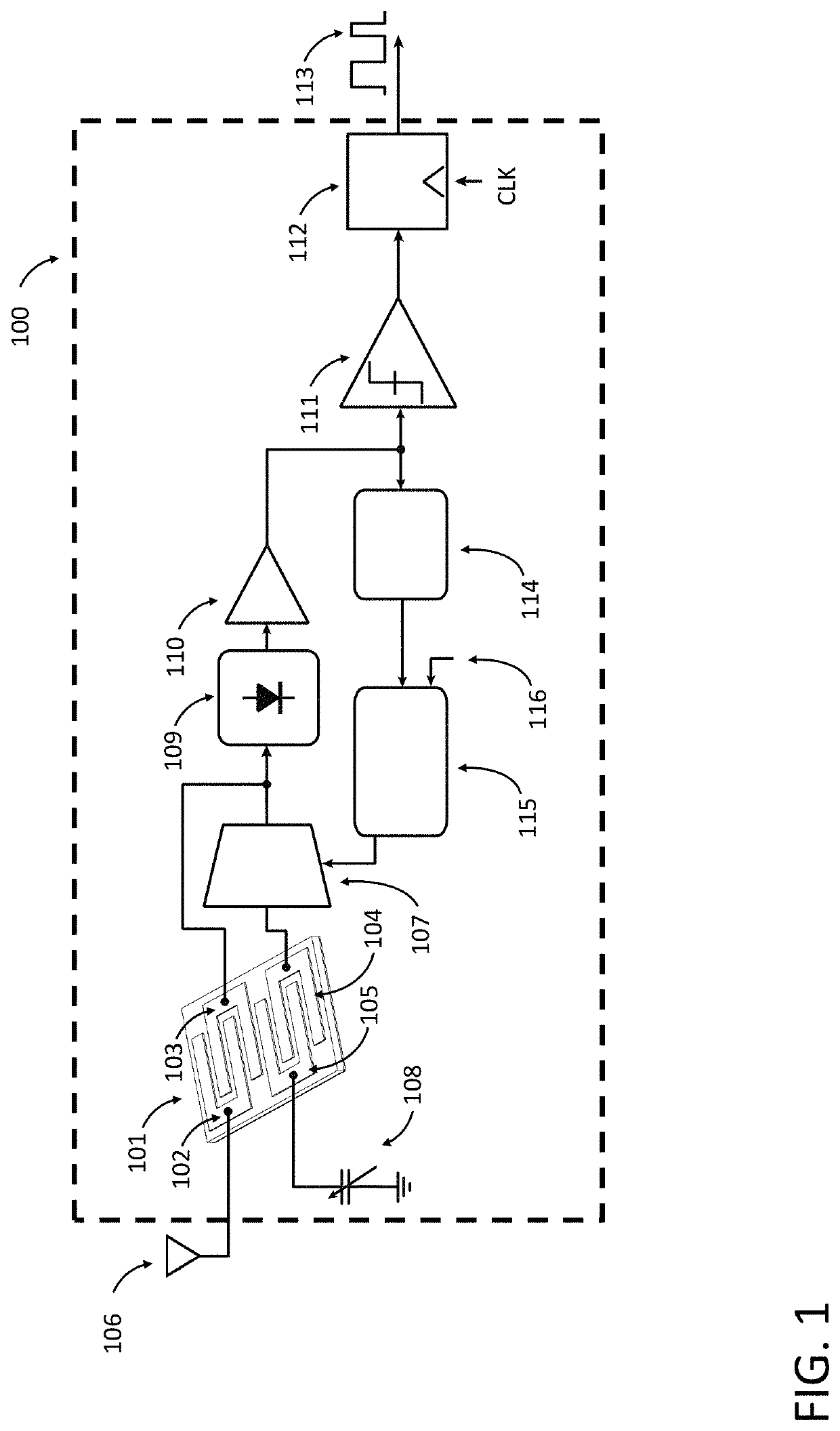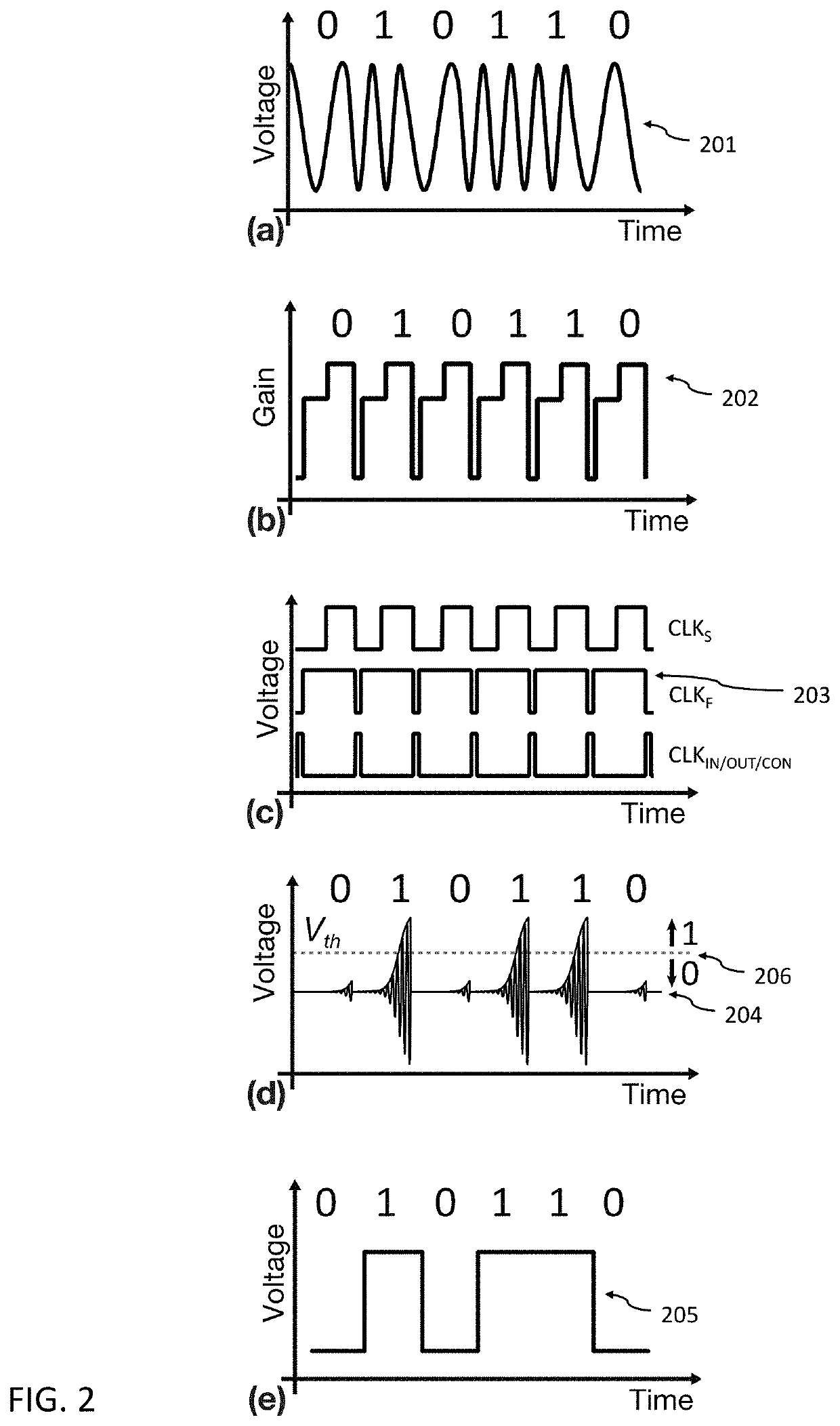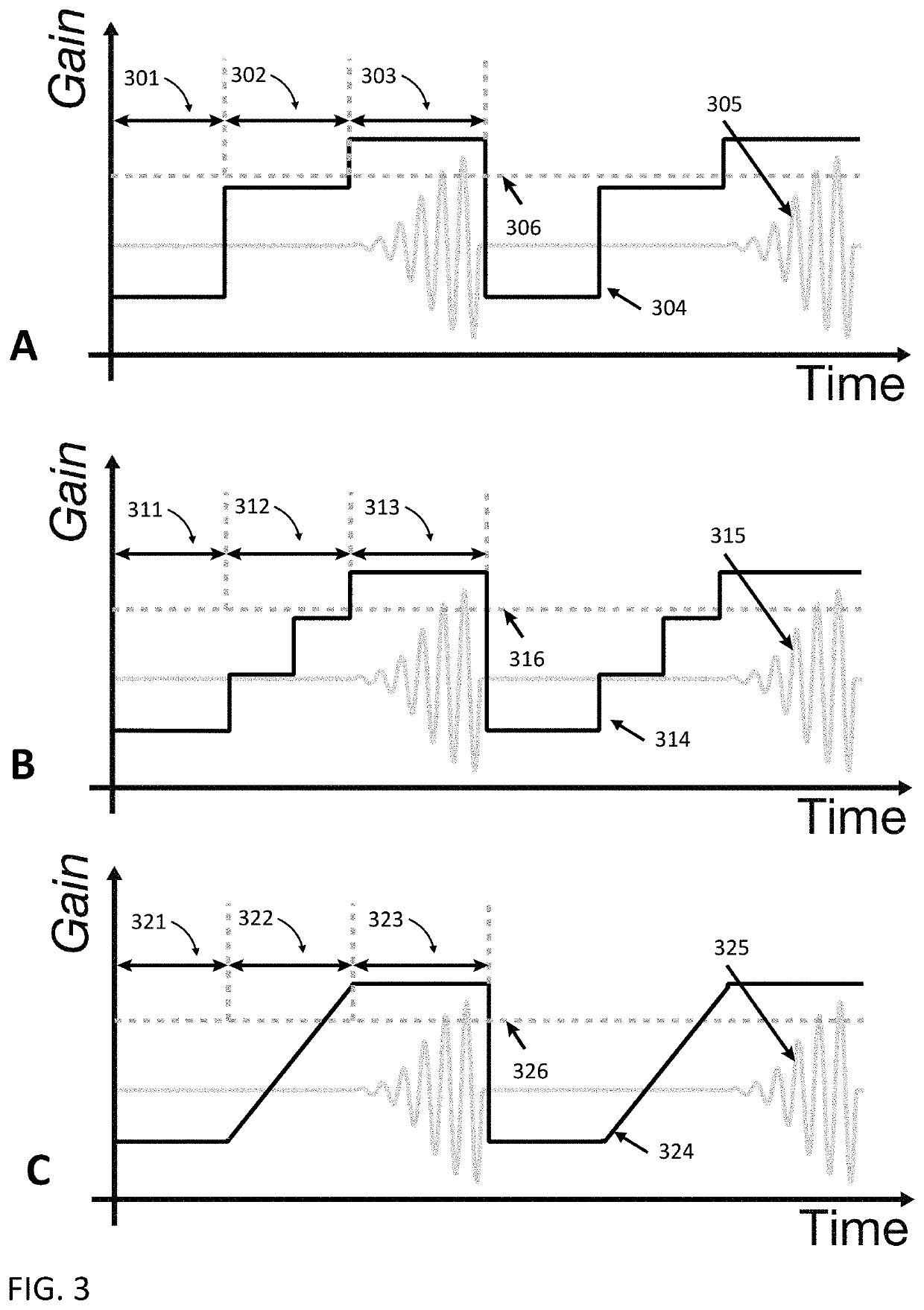Super-regenerative transceiver with improved frequency discrimination
a transceiver and frequency discrimination technology, applied in the field of wireless communication transmitters, wireless communication receivers, electronic oscillator designs, systems, can solve the problems of unfriendly 15-50 mw batteries and far too much to operate for long on small batteries, so as to improve the sensitivity or data rate improve the sensitivity of receiver signals or transmission rates, and expand the receiver frequency range of operation
- Summary
- Abstract
- Description
- Claims
- Application Information
AI Technical Summary
Benefits of technology
Problems solved by technology
Method used
Image
Examples
embodiment 1
2. The RF receiver of embodiment 1, wherein the feedback element comprises a controlled impedance element.
3. An RF receiver as in any one of embodiments 1-2, wherein the two or more electrodes comprise at least two feedback electrodes, and the controlled impedance element is coupled differentially to the at least two feedback electrodes.
4. An RF receiver as in any one of embodiments 1-3, wherein at least one of the one or more feedback control signals controls at least one of the at least one feedback electrode to couple to a dissipative element during at least a portion of the period of a single symbol.
5. The RF receiver of embodiment 1, wherein the two or more electrodes comprise at least two feedback electrodes, the feedback element comprises a closed-loop feedback element, and the closed-loop feedback element is coupled to the at least two feedback electrodes.
embodiment 5
6. The RF receiver of embodiment 5, wherein the resonator comprises four or more electrodes, the four or more electrodes comprise at least four feedback electrodes, and the closed-loop feedback element is coupled differentially to the at least four feedback electrodes.
7. The RF receiver of embodiment 5, wherein at least one of the one or more feedback control signals controls at least one of the at least two feedback electrodes to couple to a dissipative element during at least a portion of the period of a single symbol.
8. The RF receiver of embodiment 5, wherein at least one of the one or more feedback control signals controls at least two of the at least two feedback electrodes to couple to each other via a dissipative element to each other during at least a portion of the period of a single symbol.
9. An RF receiver as in any one of embodiments 1-8, further comprising:
a tuning element coupled to at least one tuning electrode, wherein the two or more electrodes comprise the at leas...
embodiment 9
10. The RF receiver of embodiment 9, wherein the tuning element comprises one or more capacitors, at least one of the one or more frequency control signals controls an output capacitance of the tuning element, and the resonance frequency is based at least in part upon the output capacitance of the tuning element.
11. The RF receiver of embodiment 9, wherein the tuning element comprises a voltage source, at least one of the one or more frequency control signals controls an output voltage of the tuning element, and the resonance frequency is based at least in part upon the output voltage of the tuning element.
12. An RF receiver as in any one of embodiments 9-11, wherein at least one of the one or more frequency control signals is based at least in part upon a temperature associated with the resonator.
13. An RF receiver as in any one of embodiments 9-12, wherein at least one of the at least one feedback electrode and at least one of the at least one tuning electrode are coupled to a fir...
PUM
 Login to View More
Login to View More Abstract
Description
Claims
Application Information
 Login to View More
Login to View More - R&D
- Intellectual Property
- Life Sciences
- Materials
- Tech Scout
- Unparalleled Data Quality
- Higher Quality Content
- 60% Fewer Hallucinations
Browse by: Latest US Patents, China's latest patents, Technical Efficacy Thesaurus, Application Domain, Technology Topic, Popular Technical Reports.
© 2025 PatSnap. All rights reserved.Legal|Privacy policy|Modern Slavery Act Transparency Statement|Sitemap|About US| Contact US: help@patsnap.com



